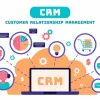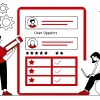
What Is Customer Analysis?- Definition, Importance, & Benefits
Customer analysis is a cornerstone of business strategy, enabling organizations to understand their customers’ needs, preferences, and behaviors. It involves gathering and analyzing data to create detailed customer profiles and uncover insights about what drives purchasing decisions.
Importance of Customer Analysis
Customer analytics allows companies to understand their strengths and weaknesses and identify opportunities for improvement. Here’s a detailed look at why it matters:
1. Enhances Decision-Making
- By leveraging data from customer analysis, businesses can make informed decisions based on real insights rather than assumptions.
- It highlights customer preferences, behaviors, and trends, enabling you to fine-tune marketing campaigns and product offerings to maximize effectiveness.
2. Improves Customer Experience
- A deep understanding of customer needs and expectations helps in designing personalized experiences tailored to specific demographics or individual preferences.
- Offering solutions that align with customer desires fosters trust, satisfaction, and long-term loyalty, creating stronger relationships. For more insights on customer feedback
3. Identifies Market Opportunities
- Customer analysis helps uncover gaps in the market or unmet needs that your business can address, giving you a competitive edge.
- These insights are instrumental in developing innovative products or services that resonate with your audience and fulfill their demands.
4. Increases Return on Investment (ROI)
- By targeting high-value customers and focusing resources where they matter most, businesses can optimize spending and improve efficiency.
- It helps avoid investing in strategies or channels that fail to deliver results, ensuring better profitability.
5. Strengthens Competitive Advantage
- Knowing your customers better than your competitors allows you to position your brand more effectively and stay ahead in the market.
- Customer analysis enables differentiation by delivering value where it matters most to your audience.
How to Perform Customer Analysis?
Customer analysis is a structured and thorough process aimed at understanding your audience and aligning your strategies to meet their needs. Below are the key steps to perform effective customer analysis:
1. Define Objectives
The first step is to establish the purpose of your analysis. Determine whether you want to improve customer retention, understand a specific target market, or gather insights for launching a new product. Clearly defined objectives provide focus and ensure that your efforts remain relevant and actionable.
2. Collect Data
Gather data using a mix of primary sources, such as surveys, interviews, and focus groups, to obtain direct feedback on customer needs, preferences, and challenges.
Supplement this with secondary sources like industry reports, social media analytics, and online reviews to gain a broader perspective on customer behavior and market trends. Ensure that all data collection complies with ethical guidelines and GDPR regulations to build and maintain trust.
3. Segment Your Audience
Organize your customers into meaningful groups based on demographics (age, gender, location), psychographics (values, interests, lifestyles), behaviors (purchase habits, engagement levels), or their stage in the customer journey.
Use tools such as CRM software or customer analysis templates to streamline and maintain consistency in segmentation. This step enables more personalized and targeted strategies for each group.
4. Analyze the Data
Dive into the collected data to uncover patterns, preferences, and emerging trends. Look for commonalities in customer behavior, challenges, or interests. Utilize tools like CRM platforms, Google Analytics, or business intelligence software for in-depth analysis.
Visualize the findings using charts and dashboards to make them more interpretable and shareable with stakeholders.
5. Create Customer Profiles
Develop detailed customer personas representing each audience segment. These profiles should highlight key characteristics, such as motivations, challenges, buying triggers, and preferred communication channels.
Customer personas serve as a guide for tailoring marketing campaigns, product development, and customer service strategies.
6. Implement Findings
Translate the insights from your analysis into actionable strategies. Align your marketing, sales, and product development efforts with the identified customer needs.
Personalize offers and communication for different segments to boost engagement and conversion rates. Regularly test and optimize these strategies to ensure effectiveness.
7. Monitor and Update
Customer preferences and market dynamics are constantly evolving. Regularly revisit your analysis to align with current trends and changing customer needs. Collect ongoing feedback through surveys, reviews, and interactions to stay updated.
Make customer analysis an iterative process, refining your strategies over time to maintain relevance and drive value.
Tools for Customer Analysis
Using the right tools can significantly simplify and enhance the customer analysis process, providing accurate insights that drive informed decision-making. Below are key categories of tools and their applications:
1. Customer Relationship Management (CRM) Systems
CRM platforms serve as a centralized hub for organizing, storing, and analyzing customer data. They help businesses track customer interactions, manage sales pipelines, and monitor engagement across various touchpoints.
Tools like Salesforce and HubSpot offer robust features such as detailed reporting and audience segmentation, enabling actionable insights into customer behavior.
2. Survey Platforms
Surveys are a direct way to gather valuable feedback about customer preferences, pain points, and satisfaction levels. Modern survey platforms simplify the process of designing, distributing, and analyzing surveys, making it easier to understand customer needs.
Tools like Google Forms provide a quick and customizable survey solution, while LazyMonkey offers advanced capabilities such as data analysis and branching logic for in-depth insights.
3. Analytics Tools
Analytics platforms offer crucial data on customer behavior, website traffic, and sales trends. These tools help businesses identify high-performing campaigns, track conversion rates, and map the customer journey.
Google Analytics is ideal for monitoring website performance, while Hotjar provides visual insights through heatmaps and session recordings, enabling a better understanding of user behavior.
4. Social Listening Tools
Social listening tools allow businesses to monitor brand mentions, customer sentiment, and trending conversations across social media platforms and online forums.
These insights help gauge public perception and track relevant discussions about your brand or industry. Tools like Brandwatch specialize in sentiment analysis, while Hootsuite is effective for managing and engaging with social media audiences.
5. AI-Powered Insights
AI-driven tools harness the power of large datasets to uncover trends, predict customer behavior, and offer actionable recommendations. These tools automate data interpretation, saving time while improving accuracy.
For instance, Rank Math Content AI identifies content trends and SEO opportunities, while other AI platforms excel at predictive analytics and customer segmentation.
Benefits of Customer Analysis
Customer analysis offers numerous advantages that can significantly enhance business performance and customer relationships. Here’s a deeper dive into its key benefits:
1. Stronger Brand Loyalty
- A personalized approach to customer interactions helps build trust and fosters deeper emotional connections with your audience.
- By understanding individual needs and preferences, businesses can offer tailored solutions that resonate on a personal level, encouraging repeat purchases.
- Satisfied and valued customers are more likely to advocate for your brand, increasing word-of-mouth referrals and organic growth.
2. Better Targeting
- Precise audience segmentation ensures your marketing efforts reach the right people at the right time.
- This reduces wasteful spending on broad, ineffective campaigns and increases the efficiency of your advertising budget.
- With detailed insights into customer preferences, you can craft messaging that speaks directly to the needs and desires of each segment, boosting conversion rates.
3. Competitive Edge
- A thorough understanding of your audience positions your business as a leader in the market, enabling you to deliver what customers want better than your competitors.
- Customer analysis helps uncover trends, gaps, and opportunities that competitors may overlook, allowing you to innovate and stay ahead.
- By consistently meeting or exceeding customer expectations, your brand becomes the go-to choice in your industry.
Conclusion
Customer analysis is more than just data collection, it’s a pathway to understanding and connecting with your audience. Businesses that invest time and effort into understanding their customers can craft more effective strategies, deliver superior experiences, and ultimately achieve long-term success.
Frequently Asked Questions? (FAQs)
What Is Customer Analysis?
Customer analysis is the process of studying customer data to understand their behavior, needs, and preferences, aiding in informed business decisions.
Why Is Customer Analysis Important?
It improves decision-making, enhances customer experience, identifies opportunities, and boosts ROI by aligning business strategies with customer needs.
How Do I Start With Customer Analysis?
Define your objectives, collect data, segment your audience, analyze trends, and create actionable strategies.
What Tools Are Used For Customer Analysis?
Popular tools include CRM software (e.g., Salesforce), analytics platforms (e.g., Google Analytics), and survey tools (e.g., LazyMonkey).
Enhance Patient Care and NABH Compliance with LazyMonkey
LazyMonkey is your all-in-one solution for improving patient care, retaining more patients, and meeting NABH standards. Our powerful QR-based feedback tool enables you to capture real-time insights from patient feedback, discharge surveys, staff and doctor evaluations, and clinical research, while also streamlining inter-departmental communication.
Transform your healthcare facility today - reach out to us at hello@lazymonkey.in, or request a demo here!
Elevate Your Restaurant Experience with LazyMonkey
LazyMonkey’s QR-based feedback system helps you gather real-time insights from customers, track satisfaction levels, and enhance the dining experience. Get instant feedback on your menu, service, and ambience, and make data-driven improvements to boost repeat customers and reviews.
Improve your restaurant today – reach out to us at hello@lazymonkey.in, or request a demo here!
Empower Student Engagement and Campus Improvement with LazyMonkey
LazyMonkey offers a seamless way to gather student feedback, track satisfaction, and enhance campus life. From course evaluations to dorm feedback, our QR-based solution makes it easy to capture valuable insights and improve student retention.
Upgrade your university experience – contact us at hello@lazymonkey.in, or request a demo here!
Streamline Feedback and Drive Performance Across Your Enterprise/Franchise with LazyMonkey
Whether you manage one or multiple locations, LazyMonkey’s QR-based feedback system helps you gather real-time employee and customer feedback. Improve operational efficiency, track satisfaction, and make data-driven decisions to enhance brand consistency and growth.
Transform your franchise today – reach out to us at hello@lazymonkey.in, or request a demo here!
Enhance Customer Satisfaction and Service Standards in Banking with LazyMonkey
LazyMonkey empowers banks to capture real-time feedback from clients across branches. Improve customer experience, assess service quality, and ensure regulatory compliance with our QR-based solution, helping you retain clients and meet banking standards.
Elevate your bank’s customer care – contact us at hello@lazymonkey.in, or request a demo here!
Boost Customer Engagement and Mall Satisfaction with LazyMonkey
LazyMonkey’s QR-based feedback tool enables you to collect feedback from shoppers, track satisfaction, and enhance the mall experience. Gather insights on store services, cleanliness, and entertainment to create an unmatched customer journey.














